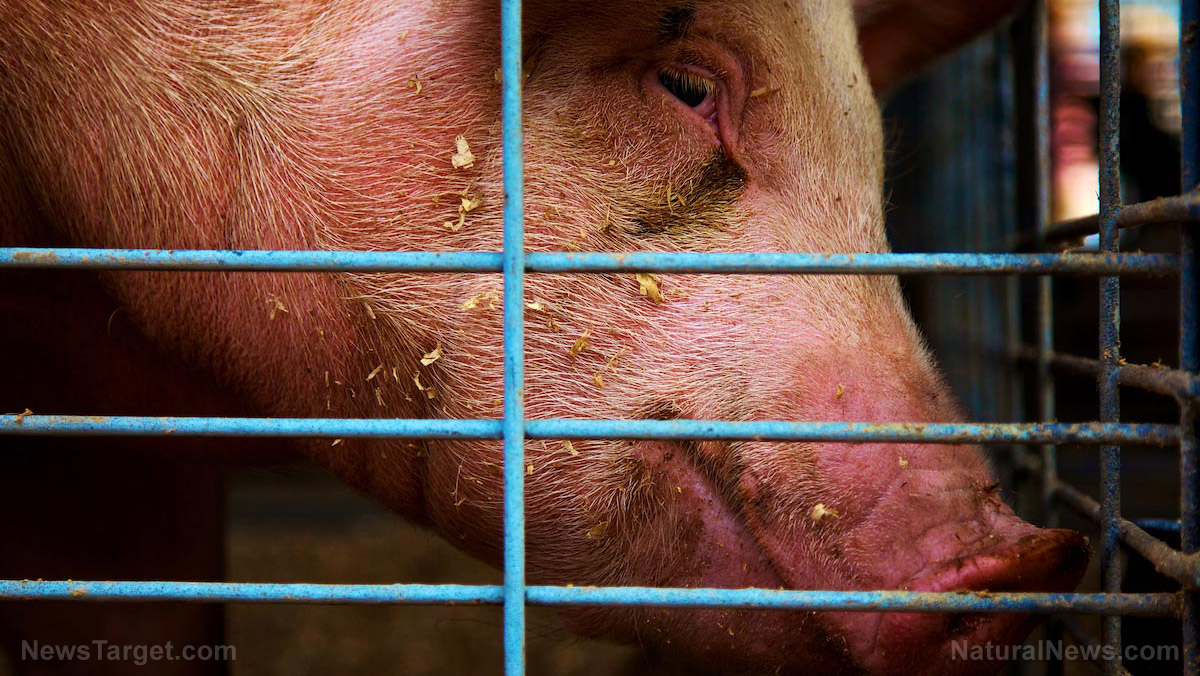Genetically modified, glow-in-the-dark lamb ‘accidentally’ winds up in French food supply
08/19/2015 / By gmonews

Is it just an unfortunate case of biotechnology gone wrong, or does the French government’s “accidental” release of a genetically-modified (GMO) ewe into France’s food supply signify something more sinister? This is one of the pertinent questions being asked following a recent announcement by the French National Institute for Agricultural Research (INRA) that one of its GMO test lambs somehow ended up being sold to a private party — which is against the law in France — and secretly placed into the food supply.
The GMO lamb in question had been under investigation as part of a research project looking at human transplants for heart disease. The transgenic ewe was never intended to leave the INRA laboratory, and it most assuredly was never meant to be consumed by humans. Nevertheless, the animal, which was birthed by its GMO mother, was somehow shipped from the facility on August 5, 2014, to a “partner abattoir,” and its carcass was then sold to another private individual on October 28 of the same year.
INRA claims that it didn’t find out about the breach of Article L 536-4 of the French Environmental Code, which prohibits the sale of any product made from or containing GMOs, until November 5. Once it became privy to this information, INRA says it immediately launched an internal administrative inquiry; suspended the sale of all livestock; halted all associated experiments; and destroyed all of its GM materials.
The group also suspended the staff member who reportedly concealed the sale of the GMO ewe from upper management, but it was too late; the genetically-altered animal had already made its way into the human food chain.
Salmon, wheat and now lamb: GMOs are bound to escape and destroy ecosystems
According to the Telegraph (U.K.), the so-called “green sheep” contained a jellyfish protein that made its skin glow a fluorescent green color. Researchers say that the purpose of this alteration was to make it easier for scientists to monitor the activity of altered genes inside the lamb’s body, in this case for research involving human cardiology.
“The research programme that gave rise to the ewe lamb thus sold was designed to understand, in sheep (a ‘model’ animal for humans), how cells could be grafted to restore deficient cardiac function following a myocardial infarction,” reads a statement issued by INRA. “To evaluate the viability of such grafts (site and evolution of the cells used), it was necessary to employ animals expressing a substance called Green Fluorescent Protein (GFP), which renders their cells fluorescent.”
How exactly did the GMO lamb escape this supposedly world-class facility? INRA’s internal investigation suggests foul play on the part of a disgruntled employee who allegedly was trying to get back at a colleague with whom he or she had a dispute. How this actually harmed the employee in question is anyone’s guess, and this explanation seems to be a bit of a stretch.
Nevertheless, this incident serves to illustrate that GMOs simply can’t be contained, no matter ehat level of “biosecurity” is involved or what promises are issued. We’ve seen this on multiple occasions, including with the domestic release of illegal GMO wheat — which isn’t even commercially available — as well as the escape of GM “AquaBounty” salmon in Panama.
“If some people are allowed to choose to grow, sell and consume GM foods, soon nobody will be able to choose food, or a biosphere, free of GM,” warns sustainability expert Roger Levett. “It’s a one way choice, like the introduction of rabbits or cane toads to Australia; once it’s made, it can’t be reversed.”
Sources for this article include:
Tagged Under:


















